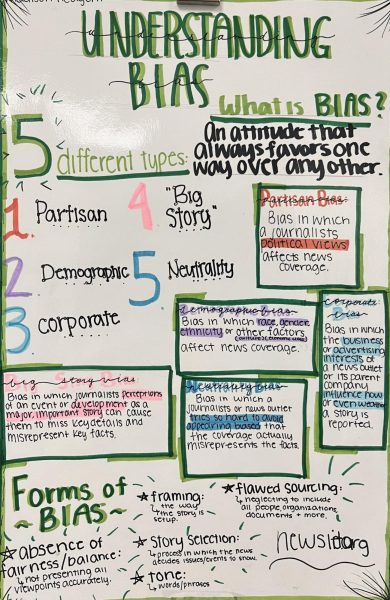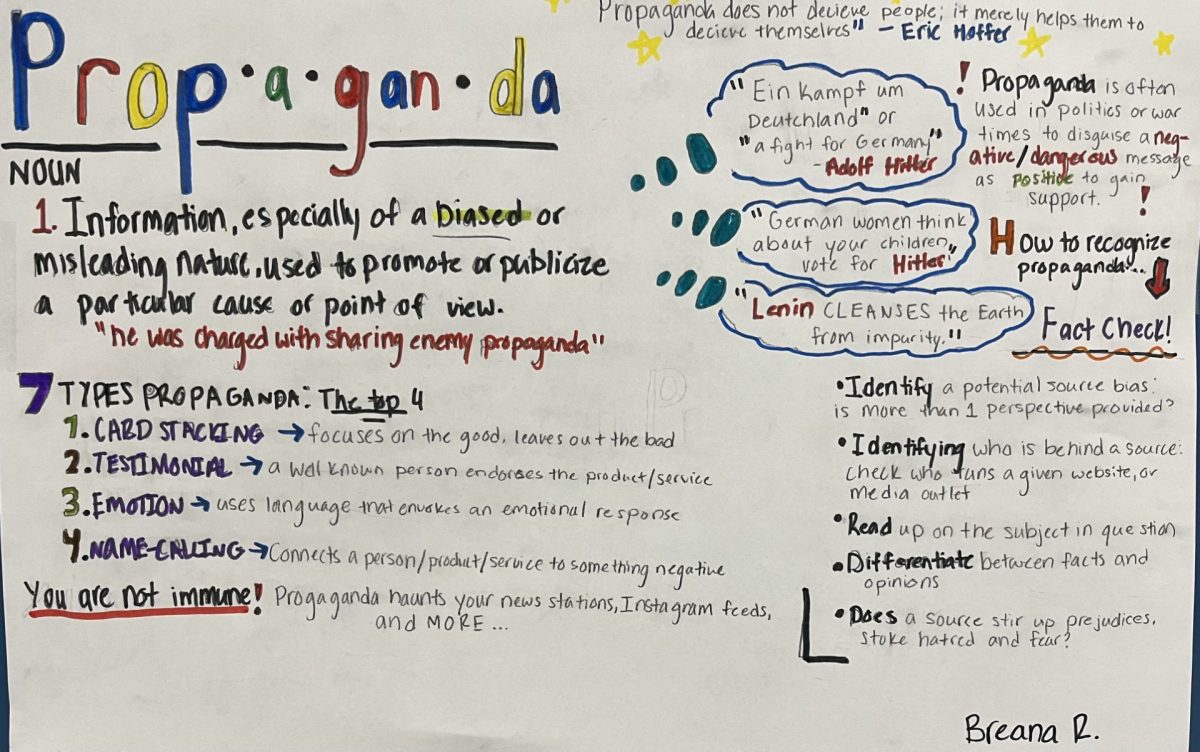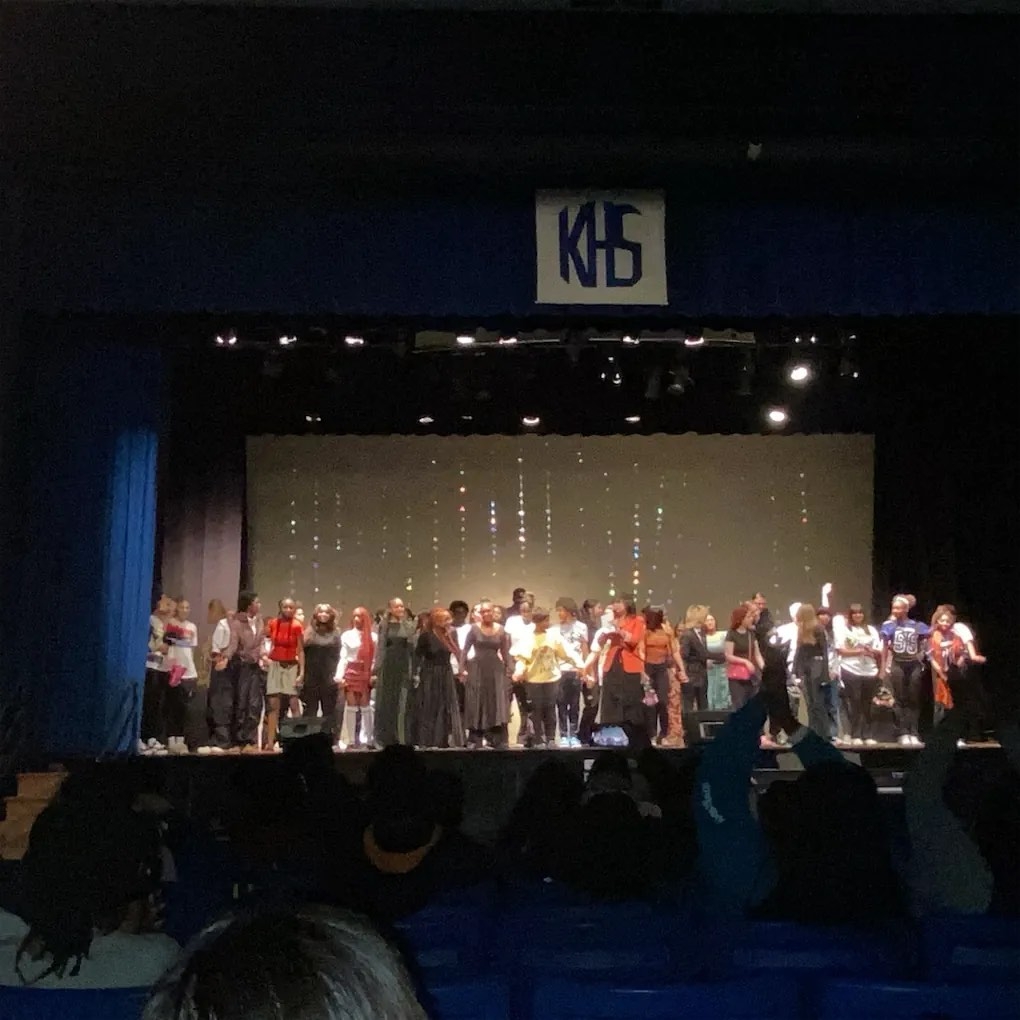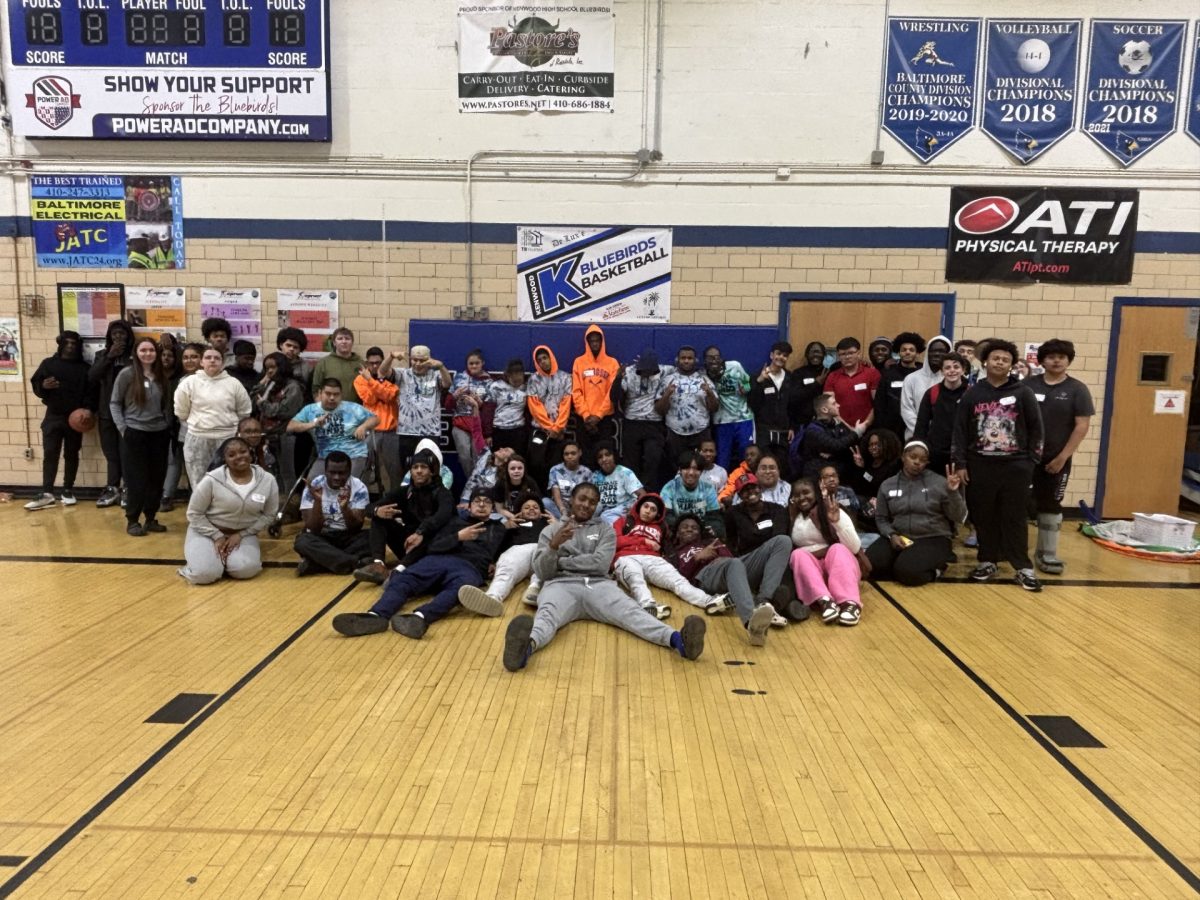Have you ever checked the news on a website or a TV channel and saw something that seems blatantly false or exaggerated but yet it’s still being considered “news”? It may be an example of propaganda! Understanding what propaganda is and how to recognize it is an important part of being news literate.
With the advancement of digital news and journalism it is easy to create and publish propaganda that is biased that can be easily accessed by the masses. As such, it’s important to understand the effects of propaganda and how to distinguish it from real news.
There is no one set definition of propaganda, but it is generally known as a form of persuasion that involves manipulating facts and using lots of emotion to convince its audience to agree with it. This is different from an opinion, which uses facts and evidence, not twisting them, to offer a perspective on a topic. Still, it may be difficult for some people to distinguish the two, so below are some examples of where propaganda is used in both popular media and everyday life. This list comes from Mind over Media, which provides in-depth information about propaganda.
As an educated consumer of news and information in our digital age, people should be aware of the following:
Journalism: Many professional journalists follow a business agenda and look to get positive reviews on their work both from their audience and PR people. This agenda can lead to misinformation and/or propaganda being published as journalism. Yes, this includes journalism on social media as well.
Advertising: The goal of advertisements is to increase consumer consumption of a product or service, therefore increasing profit. Many companies will design advertisements to convince consumers that their products are good or necessary.
Government: Many governments, including the United States government, have done their part in publishing propaganda for many reasons. This may include justifying war/conflict, promoting public health, and uplifting or bringing down a social norm(s).
Education: Many schools and educational institutions from kindergarten to university can design their curriculum to reflect a certain bias and/or worldview.
Entertainment: Some film and game development studios incorporate certain ideas/ideals into their stories that can be both good and bad. This has been used multiple times in the past when producing entertainment for many reasons, including presenting a certain view on current events. This viewpoint will likely be biased towards one side.
Advocacy: Propaganda is often used to catch people’s attention and persuade them to help make a social change.
Understanding how propaganda and its’ bias towards something may show up in the information you consume is important when evaluating the credibility and reliability of information.
As you can tell, propaganda is everywhere and is becoming harder to detect every day, but that doesn’t mean you can’t combat it. When looking at news and current events, make sure to look at multiple sources to get the most neutral and accurate information on it. This does mean doing more than one Google search, but the time spent will be worthwhile.
In addition, remember to take breaks and take time to yourself. With the amount of news and events coming from around the world coming at us nonstop, it’s important to ground yourself and take a break from the overflow of information we’re bombarded with daily.

Sources:
Silva, John. “NLP Blog: Distinguishing among News, Opinion and Propaganda.” News Literacy Project. 20 June 2018, newslit.org/educators/civic-blog/distinguishing-among-news-opinion-and-propaganda/.
“Propaganda is All Around Us.” Mind Over Media. (2015). Mediaeducationlab.com. https://propaganda.mediaeducationlab.com/learn/







